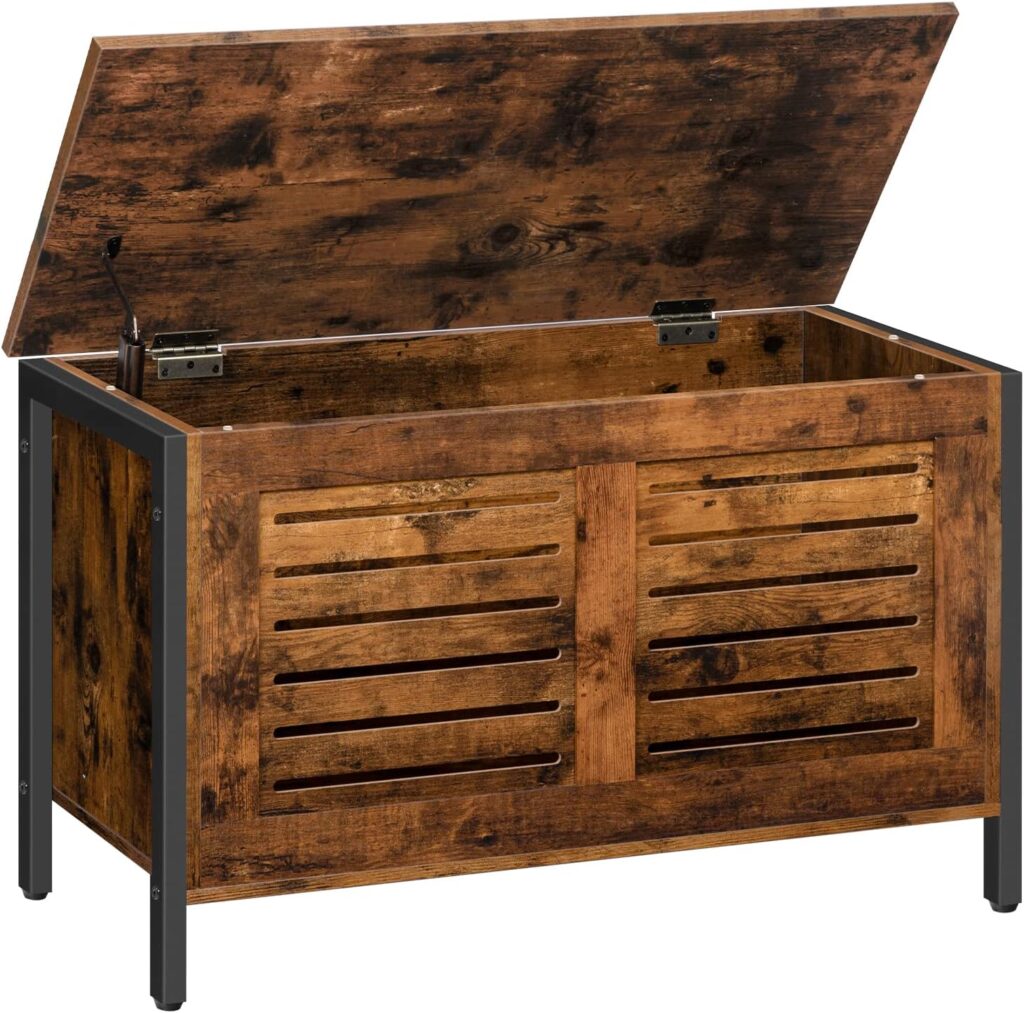7 Smart Ways to Store Your Comforters at Home

Credit: Allewie
“Proud Homemaker is part of several affiliate marketing programs, so we may earn commissions on products selected and purchased through our retailer links.”
Storing comforters can be a challenge, especially when space is limited, but with a bit of creativity, you can keep them neatly tucked away without compromising your home’s organization. In this guide, “7 Smart Ways to Store Your Comforters at Home,” we’ll explore practical and space-saving solutions that ensure your bedding stays fresh and accessible. From utilizing under-bed storage to repurposing furniture, these tips will help you maximize your storage options while maintaining a clutter-free environment.
Whether you’re dealing with seasonal comforters or just looking to free up closet space, these ideas are designed to fit various needs and styles. By implementing these smart comforter storage solutions, you’ll be able to keep your home tidy and your comforters in top condition, ready for use whenever you need them.
1. Tightly Roll Your Comforter

One of the simplest yet most effective ways to store your comforters is by tightly rolling them. This method not only saves space but also keeps your comforter wrinkle-free and ready for use. To achieve the best results, start by laying the comforter flat on a clean surface. Smooth out any wrinkles or folds, then begin rolling from one end, applying even pressure to ensure a compact roll. Once rolled, secure it with fabric ties or ribbon to maintain its shape.
Tightly rolling your comforter is particularly useful for storing it in narrow spaces like under-bed drawers or on closet shelves. It also makes it easier to fit multiple comforters in a single storage bin or bag, optimizing your storage space while keeping your bedding fresh and organized.
2. Store Your Comforter in a Vintage Chest

Credit: HOOBRO
Storing your comforter in a vintage chest adds both charm and functionality to your home. A vintage chest not only provides ample space to keep your comforter neatly tucked away but also serves as a stylish accent piece in any room. The solid construction of these chests protects your bedding from dust and moisture, ensuring it stays fresh and ready for use.
To store your comforter, simply fold it neatly and place it inside the chest, allowing it to rest flat or with minimal creases. This method works particularly well for heavier comforters, as the chest’s sturdy structure can handle the weight without compromising its shape. Whether placed at the foot of your bed or in a cozy corner, a vintage chest offers a practical yet aesthetically pleasing solution for comforter storage, blending storage needs with timeless decor.
3. Utilize Under-Bed Space for Comforter Storage

Credit: Allewie
Utilizing under-bed space for comforter storage is a smart and efficient way to keep your bedding organized without taking up valuable closet or shelf space. The area beneath your bed is often underutilized, yet it offers a perfect spot for stowing away bulky items like comforters. To maximize this space, consider using storage bins or bags specifically designed for under-bed storage. These containers typically have a low profile and can easily slide in and out, making it convenient to access your comforter when needed.
Before placing your comforter under the bed, fold it neatly and, if possible, store it in a protective cover to prevent dust buildup. This method not only keeps your comforter out of sight but also frees up space elsewhere in your home, ensuring your bedding stays clean, fresh, and readily accessible.
4. Make Use Of Storage Bags

Credit: Fab Totes
Making use of storage bags is a practical and effective way to keep your comforters organized and in pristine condition. These bags are designed to protect your bedding from dust, moisture, and pests while saving space. To use them, simply fold your comforter neatly and place it inside the storage bag. Many storage bags come with a zipper closure and are made from durable, breathable materials that help maintain your comforter’s fluffiness and prevent mold growth.
For added convenience, consider vacuum-sealed storage bags, which reduce the volume of your comforter by removing excess air. This method is ideal for maximizing closet space and keeping comforters compact and tidy. Whether you choose standard or vacuum-sealed bags, utilizing storage bags helps you maintain a clutter-free environment and ensures your comforters remain fresh and ready for use.
5. Utilize a Cabinet for Bedding and Bathroom Storage

Utilizing a cabinet for bedding and bathroom storage is a smart way to keep your home organized and clutter-free. A dedicated cabinet provides a central location for storing comforters, towels, and other linens, ensuring they remain easily accessible and neatly arranged. When using a cabinet, consider folding your comforters and placing them on the shelves in a way that maximizes space while keeping everything visible. This allows you to quickly find what you need without rummaging through piles.
For added organization, you can designate specific shelves for bedding and others for bathroom essentials, such as towels and bath mats. By keeping your linens in a closed cabinet, you also protect them from dust and humidity, ensuring they stay fresh and ready for use. A well-organized cabinet not only streamlines your storage but also enhances the overall tidiness of your home.
6. Use Label For Added Convenience

Credit: MaxGear
Labeling your storage is a simple yet highly effective way to enhance organization and convenience when storing comforters. By clearly marking storage bins, bags, or shelves with labels, you make it easy to identify where each comforter is stored, saving time and effort when you need to retrieve them. Labels can be especially helpful if you have multiple comforters for different seasons or purposes, ensuring you can quickly find the right one without unfolding or rummaging through your storage space.
Consider using durable, easy-to-read labels that won’t peel off over time. You can categorize your comforters by size, material, or season and label each storage container accordingly. Whether you’re using under-bed storage, a cabinet, or a vintage chest, adding labels helps maintain an orderly system, keeping your comforters neatly organized and readily accessible whenever needed.
7. Use a Storage Bench to Keep Bedding Nearby

Credit: Huatean Home
Using a storage bench to keep bedding nearby is a practical and stylish solution for maintaining easy access to your comforters. A storage bench, often placed at the foot of the bed or in a living room, doubles as both seating and storage, making it a versatile addition to your home. By storing comforters inside the bench, you keep them within reach while also saving space elsewhere.
This method is especially useful for quickly accessing extra bedding during colder months or when hosting overnight guests. To optimize space, fold your comforters neatly before placing them inside the bench. A storage bench not only helps you stay organized but also adds a decorative element to your room, blending functionality with aesthetic appeal. This approach ensures your comforters are always close at hand, without sacrificing style or space.
Summary From Proud Homemaker!
Incorporating smart storage solutions for your comforters is essential for maintaining an organized and clutter-free home. Whether you’re utilizing under-bed space, repurposing a vintage chest, or keeping your bedding within easy reach in a storage bench, each of these ideas offers practical ways to store your comforters while maximizing your living space. From tightly rolling comforters to storage bags and cabinets, these strategies not only protect your bedding but also ensure it’s ready for use whenever needed.
By implementing these 10 smart storage ideas, you’ll keep your comforters in top condition, add efficiency to your daily routine, and enhance the overall tidiness of your home. With a little creativity and organization, storing comforters becomes a seamless part of maintaining a cozy and well-ordered living space.







4 Comments